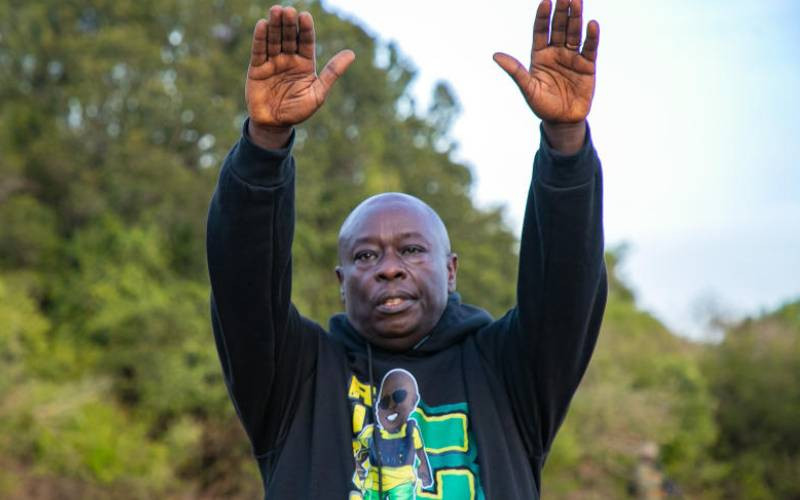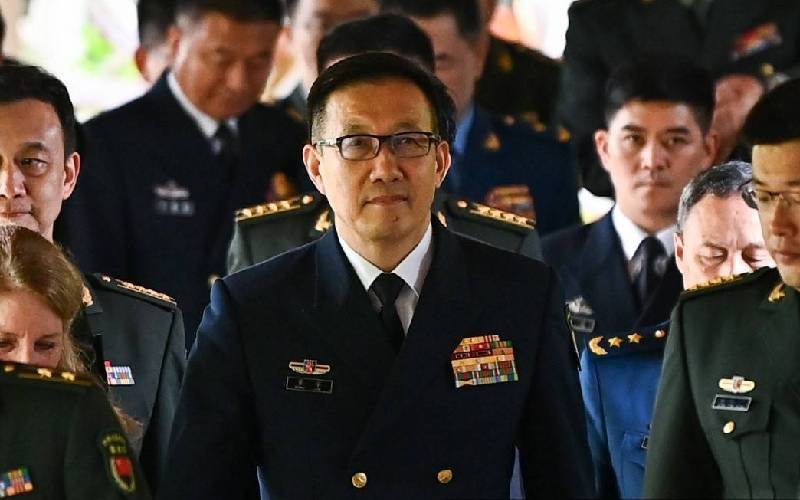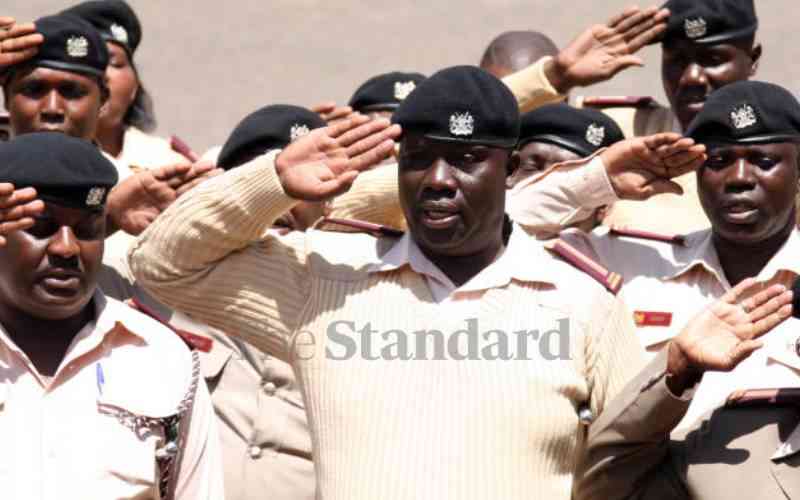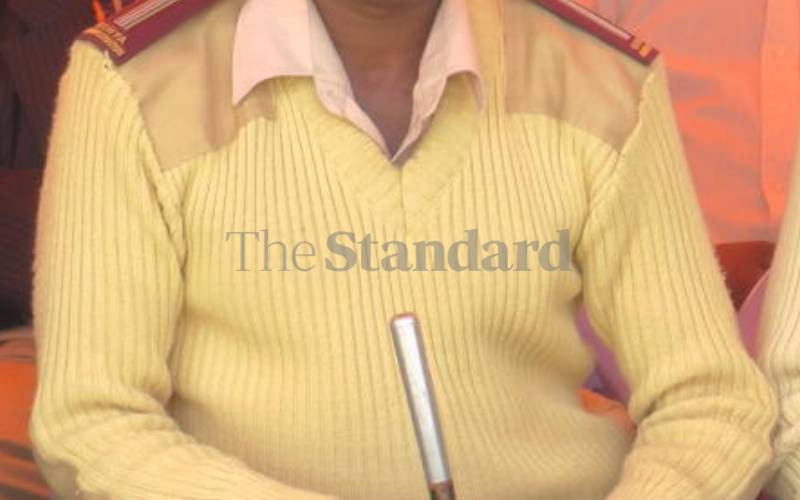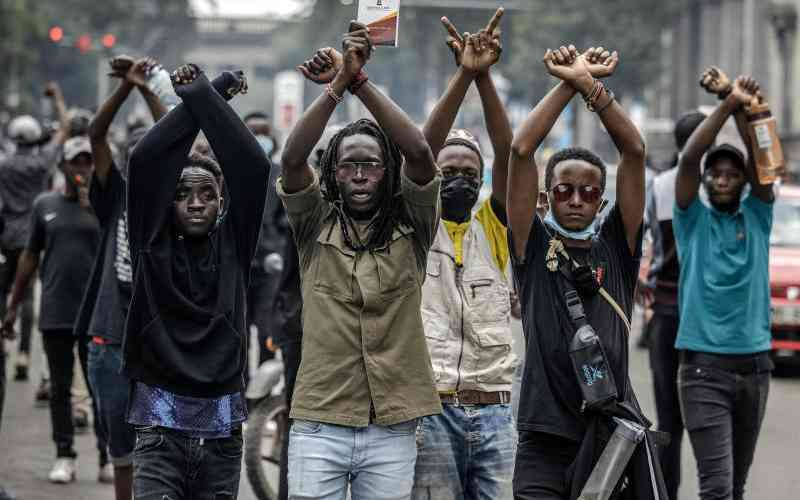 |
|
Chief Njiiri Karanja with Kenya’s acting governor R Thurbull who visited him at Kihoya. |
By Kamau Mutunga
Kenya: Village chiefs in the colonial era were resented since they were termed as relics of British authority. And for Senior Chief Njiiri wa Karanja of Fort Hall (Murang’a), his case was not different.
The mighty chief was a dreaded man and one of the most powerful figures of his time.
Njiiri was one of the earliest to own a radio, besides having his grand children taken to school in his Land Rover.
His location size land bordering Aberdare ranges made him arguably one of the richest in Central Kenya.
Chief Njiiri was so influential that his favourite newspaper was delivered by a Kenya Police Reserve Spotter plane that dropped a copy of the East African Standard!
Because Chief Njiiri’s homestead was on the edge of a forest teeming with the rag tag Mau Mau militia — whom he hated with undiluted passion — meant the plane dropped the newspaper and swiftly made a U-turn.
“The chief ordered his wives and children to mark the fall, for should the paper miss the crest of the ridge, it might sail some distance away down the hillside,” notes The History of the Loyalists, a book published in 1958 by the colonial government.
Being illiterate meant the officer guarding him had to read the paper. Chief Njiiri had three interests: “How many Mau Mau dead?” “How many bombs dropped?” “How many guns for the Home Guards?”
During the day, the ‘most wanted’ chief would be kept under surveillance at the Kinyona Police Station, and at night an armed guard secured the home where the British flattered with resolute insolence.
One day, a shot was fired, and instead of running for his dear life, Chief Njiiri “broke a shot gun on the constables head in his effort to get into the battle. Others had to be called to forcibly restrain the 80-year-old.”
For his loyalty that included flying a 60 feet Union Jack “and kept it flying defiantly through all the subsequent Mau Mau offensives,” Senior Chief Njiiri was awarded the Member of the British Empire (MBE).
In Central Kenya, chiefs were treated as traitors in the Mau Mau bid for ithaka na wiyathi (land and freedom) and murder was never out of the cards.
Indeed, Senior Chief Waruhiu in Kiambu and chief Hinga in Nyeri were killed by the Mau Mau and in the case of ex-chief and successful timber merchant Luka Kahangara, his murder was the hallmark of the Lari Massacre on March 26, 1953 where over 10 family members were killed, alongside 100 others during the ‘Night of the Long Knives’ punctuated by breastless women and headless children. Chief Luka who often fired a rifle to scare any lingering Mau Mau elements while driving home in his Land Rover, had his homestead torched and livestock killed.
5,000 dead
Stay informed. Subscribe to our newsletter
A state-sponsored retaliation in Lari and search for suspects included torture and merciless elimination that saw over 5,000 die. The hacked body of chief Luka was never found.
Bile against chiefs was that “the Kikuyu did not have chiefs. Prior to colonialism, they were a stateless society, governed by council of elders and lineage heads…these new chiefs were a phenomenon of colonial rule…their primary jobs were labour recruitment or labour encouragement and tax collection — two colonial demands the ordinary Kikuyu tried to avoid,” writes American historian Caroline Elkins in Britain’s Gulag: The End of an Empire in Kenya.
These collaborator chiefs who were largely catapulted by self-interest were to be beneath Provincial Commissioners and District Commissioners but above the rest of a colony’s African subjects from whom they were to maintain ‘tribal order’ in exchange for generous rewards, writes Elkins.
Colonial largesse included free fertile government land, superior seedlings, cheap labour and trade licences making chiefs some of the biggest beneficiaries of colonial rule.
Chief Njiiri though, was wealthy by dint of his own effort and foresight, before his Senior Chief status.
 The Standard Group Plc is a
multi-media organization with investments in media platforms spanning newspaper
print operations, television, radio broadcasting, digital and online services. The
Standard Group is recognized as a leading multi-media house in Kenya with a key
influence in matters of national and international interest.
The Standard Group Plc is a
multi-media organization with investments in media platforms spanning newspaper
print operations, television, radio broadcasting, digital and online services. The
Standard Group is recognized as a leading multi-media house in Kenya with a key
influence in matters of national and international interest.
 The Standard Group Plc is a
multi-media organization with investments in media platforms spanning newspaper
print operations, television, radio broadcasting, digital and online services. The
Standard Group is recognized as a leading multi-media house in Kenya with a key
influence in matters of national and international interest.
The Standard Group Plc is a
multi-media organization with investments in media platforms spanning newspaper
print operations, television, radio broadcasting, digital and online services. The
Standard Group is recognized as a leading multi-media house in Kenya with a key
influence in matters of national and international interest.


